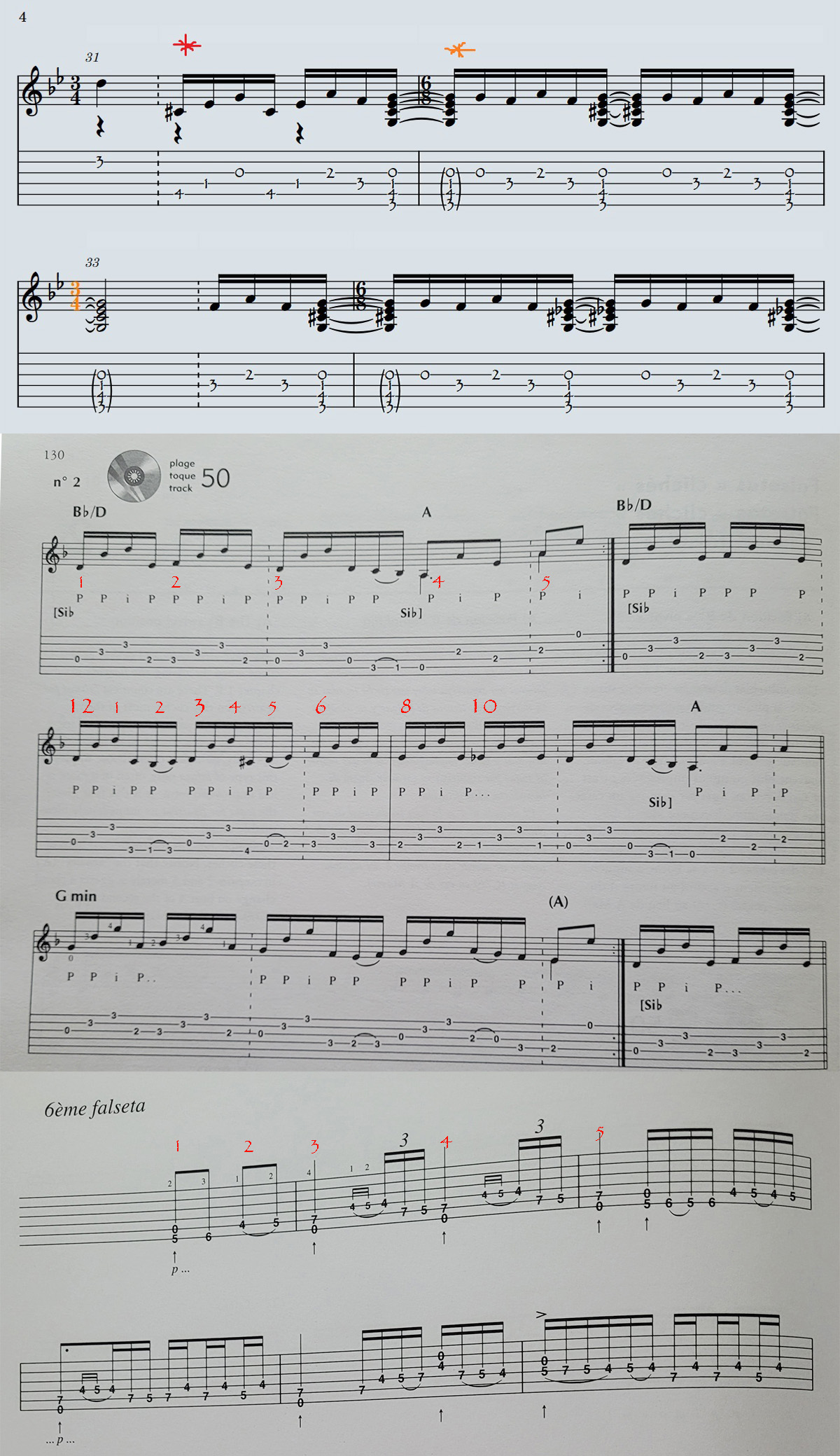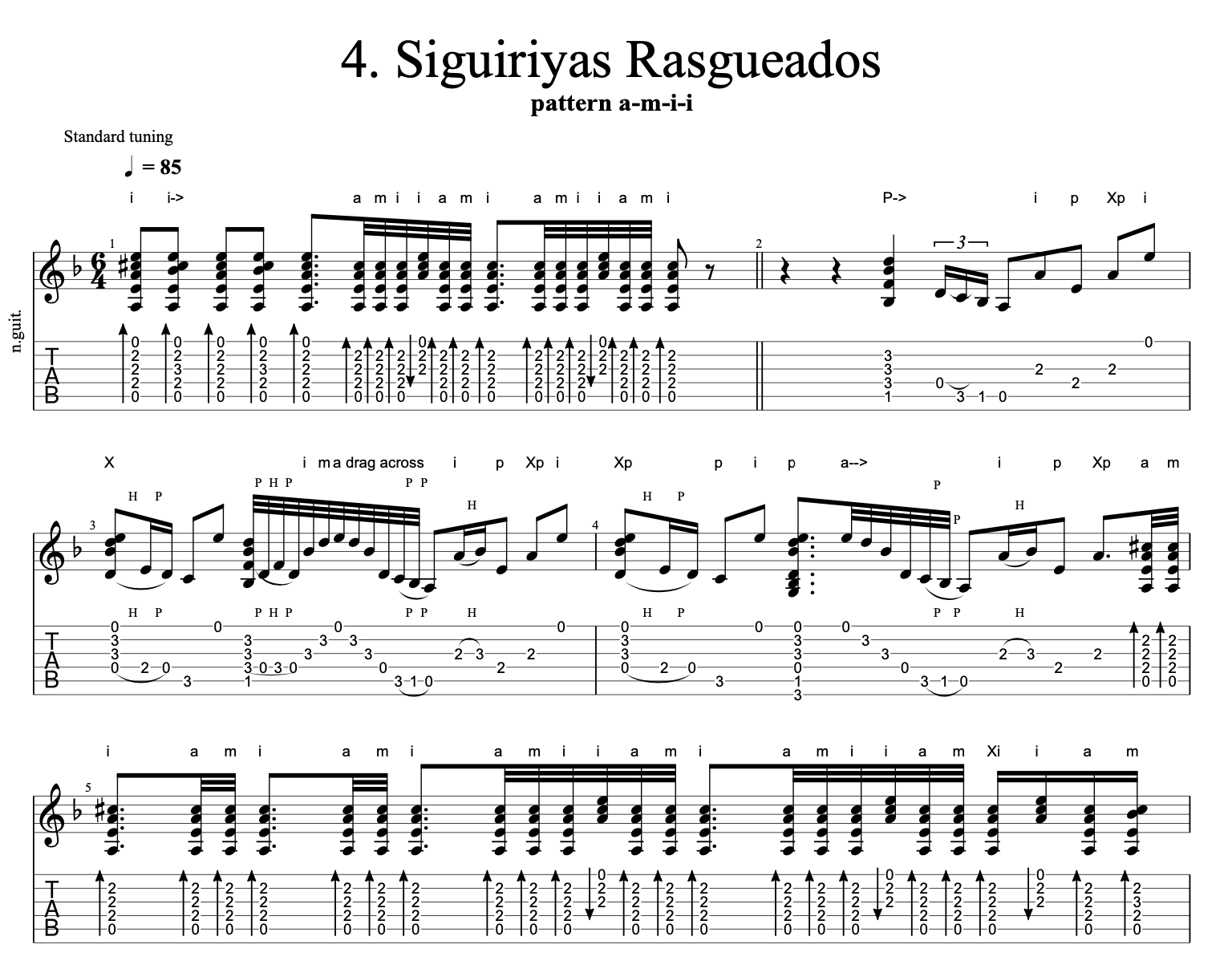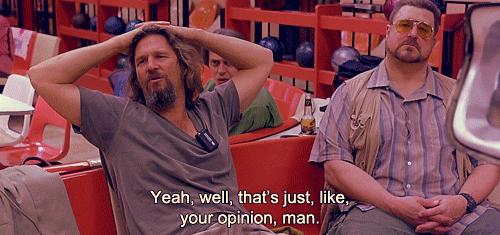|
Ricardo -> RE: Seguiriya /Siguiriya Metric Notation (Jan. 21 2025 14:16:23)
|
quote:
Paco Pena notates his soleares in 12/4 in the Toques Flamencos
This ignores the inherent symmetry, which is often exploited in various ways or simply forced via symmetry breaking (half compás expressions). Likely the transcriber was before Erik's dad, as this book came I the 70s I think. Whoever did that long bar was thinking about the Cante as the defining factor, ie., tercios define a single compas.
quote:
In any case, the meter is never simply the barlines and time signature. Bach disproved that long ago.
Not sure by what example of Bach, nor "The" meter, which one you mean. I guess you refer to when Bach would also sort of "break" symmetry by crossing phrases like a half compas? I would say sure, but he would also (as per his autographs) slice a bar in the middle at the end of the line....sort of demonstrating the thought process there ("I am using beat 3 as the downbeat in this section so that when it repeats it wraps around"...that type of thing). Not sure when the drumming thing got formalized but there is a simple math logic there, and to be frank, some of Bach's meter use is simply "wrong" as well....at least in this regard.
quote:
I don't like the 6 even with implied not groupings. Barlines are only for counting and memorizing and to give a general meter and rhythm for the music (for me...and I learned the traditional way, "Here, play this...")
Ironically I started with drums as a kid, switched to guitar and forgot everything. It was in college when I was lucky to hang with the 3 top drummers in the state (VA, Concert, Marching, some other ensemble champs) and realized the simplicity and universality of the concept. So I envision EVERY rhythmic sound as if it were to be on paper for those drummer guys, because when they look at drum score that is written, they assume it is not only "correct" but they express exactly what is meant to be felt in the moment reading it. I watch them do this in real time at it got me thinking that most musicians allow WAY too much nuance in interpretation with various scores and transcriptions.
This is why, when I saw Gonzalo's siguiriyas I realized, "oh, yes he was trained in school with drummers...there really is just this one or two ways to express this thing". Like you can split a 4/4 bar into 2/4 and these drummers will admit very little is different...but if we really want to get it right it is good to focus on it IMO. That is why I eventually did away with the 7/8 and 5/8, which is fine for reading, but it is not really the bigger picture. It is really the 6/4 that capture the correct symmetry etc. My version is the same as Herrero (that you like), minus the dotted lines. I guess that is the only reason you don't like it? (notice there is no dotted line between counts 3 and 4 but should have one, or else this just adds confusion to people that already understand meter well).
And the cante is another story. When they are both together there is the guitar which MUST be taken as the "box" such that the melody fits in the box or it does not. Like Carol Whitney did it is correct. She added compas modules rather than bar lines, which is like double bar lines if you want, an added dimension that helps the concept get across. And we see Talega ignoring these modules so every thing is well understood regarding the elasticity etc. The interpretation of a score is up to the individual's knowledge. I do feel there can be different ways to do this thing, but justifying any specific way leaves out some nuance of some sort.
quote:
Aside from the Ocon, there are not many transcriptions I trust from ca. 1850 to 1880. Of those, I do not see so much an evolution as different authors' interpretation of how to notate.
Well, the thing is, in the case of "academic music" where some things are "composed", we catch a glimpse into the mind of the composer/transcriber etc. This is what I am talking about interns of evolution...the thought process on paper. We can take clues from these sources, knowing that they are not affecting the folk art. IN other words I am certain that no modern flamenco transcriptions such as Faucher, despite popularity, have affected the actual MUSIC of flamenco, so we can use these as snapshots. Likewise a recording is only a "snap shot" not the the whole thing with all the nuance. These did however, affect the flamenco evolution later.
Anyway you say you don't see "much evolution" in the early scores...it is why I would need to walk you through it with case by case examples, such that we can parse out what it points to, what was possibly going on and what wasn't.
|
|
|
|







